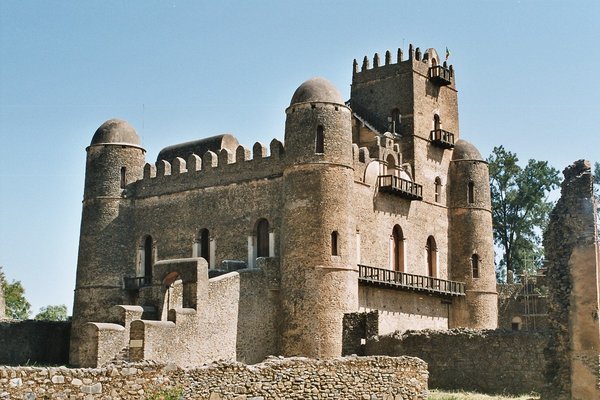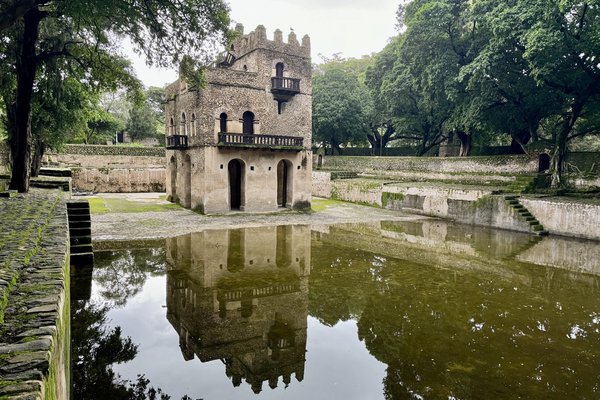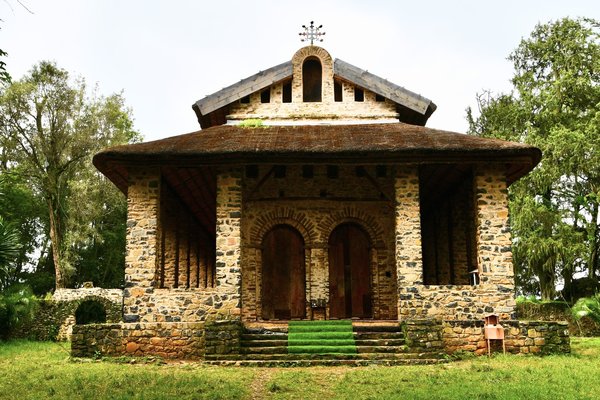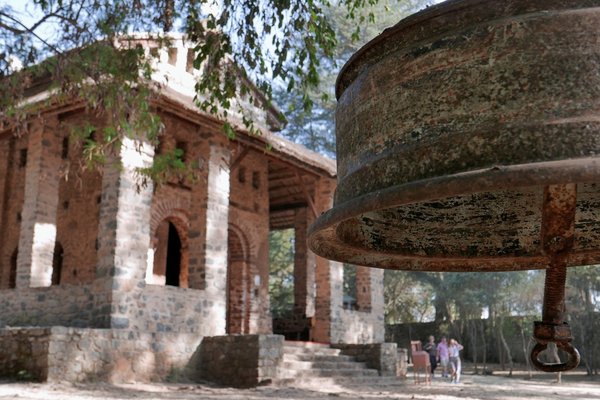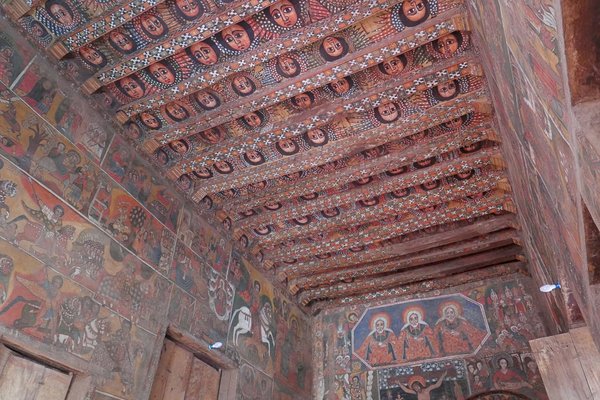Ethiopia
Fasil Ghebbi
Fasil Ghebbi, Gondar Region, covers the remains of a fortress-city that represents Ethiopian civilization on the highlands and influenced Ethiopian architecture.
Fasil Ghebbi was the residence of the Ethiopian emperor Fasilides and his successors in the 17th century. The walled compound functioned as the centre of the Ethiopian government until 1864. Its architecture was inspired by the Baroque style that was introduced by Jesuit missionaries. The site comprises the buildings within the fortress and also seven further Ethiopian-Orthodox monasteries and palaces in and around the city of Gondar.
Community Perspective: It’s an amazing place to discover, with its Medieval European/Moghul-like buildings. Wojciech recommends visiting the Gemja Ber Marjam (or Debre Birhan Selassje) church for its paintings.
Site Info
Official Information
- Full Name
- Fasil Ghebbi, Gondar Region (ID: 19)
- Country
- Ethiopia
- Status
-
Inscribed 1979
Site history
History of Fasil Ghebbi
- 1979: Inscribed
- Inscribed
- 1978: Deferred
- Bureau - ICOMOS want more info
- Type
- Cultural
- Criteria
- ii
- iii
Links
- UNESCO
- whc.unesco.org
- Official
-
- visitethiopia.travel — Visit Ethiopia Gondar
All Links
UNESCO.org
- whc.unesco.org — whc.unesco.org/
Official Website
- visitethiopia.travel — Visit Ethiopia Gondar
Community Information
- Community Category
- Secular structure: Palace
Travel Information
Red Zone Travel Advisory
Recent Connections
-
No Map
-
Red Zone Travel Advisory
North of Ethiopia -
Sir Wilfred Thesiger
1960See prmprints.com
Connections of Fasil Ghebbi
- Individual People
-
-
Sir Wilfred Thesiger
1960See prmprints.com
-
- Trivia
-
-
On Banknotes
50 birr noteSee www.haris.dk
-
- History
-
-
Fusion
Gondarian style: buildings marked by Hindu and Arab influences, subsequently transformed by the Baroque style brought to Gondar by the Jesuit missionaries. -
Located in a Former Capital
Gondar, old imperial capital city of Ethiopia -
African Kingdoms
Ethiopian Empire (1270 - 1974)See en.wikipedia.org
-
- Damaged
- World Heritage Process
-
-
Incorrect UNESCO 'Number of locations'
Although the description mentions 8 locations these have not been identified as such with UNESCO ID numbers -
No Map
-
- Religion and Belief
-
-
Ethiopian Orthodox
Ethiopian Orthodox Churches -
Jesuit Order
"the Baroque style brought to Gondar by the Jesuit missionaries" (unesco website) -
Jewish religion and culture
Fasil Ghebbi and the other remains in Gondar city demonstrate a remarkable interface between internal and external cultures, with cultural elements related to Ethiopian Orthodox Church,Ethiopian Jews and Muslims. (UNESCO website)
-
- Constructions
-
-
Baths
Baths of Fasiladas -
Horse Stables
-
- WHS on Other Lists
-
-
UNESCO Intangible Cultural Heritage Lists
Ethiopian Epiphany (2019) has been celebrated historically in Axum, Lalibela, Gondar where world heritage sites of Ethiopia are found.See ich.unesco.org
-
U.S. Ambassadors Fund
Preservation of the 16th-Century Castle at Guzara (2004) -
World Monuments Watch (past)
Mentewab-Qwesqwam Palace (2000, 1998)
-
- Timeline
-
-
Built in the 17th century
From 1636 on
-
- Science and Technology
- Visiting conditions
-
-
Red Zone Travel Advisory
North of Ethiopia
-
- WHS Names
-
-
Named after individual people
Ghebbi Fortress founded in the 17th century by Emperor Fasilides. "Ghebbi" = "Enclosure" in Amharic ... so "Fasil's enclosure" (Fasilides (Ge'ez: ፋሲልደስ; Fāsīladas; 20 November 1603 – 18 October 1667), also known as Fasil, Basilide, or Basilides (as in the works of Edward Gibbon), was Emperor of Ethiopia from 1632 to his death on 18 October 1667) (Wiki) -
Untranslated Toponyms
"Ghebbi is an Amharic word that means compound or enclosure". So, "Fasil Ghebbi" means "Emperor Fasil's enclosure". Other uses include the Menelik Palace in Addis, known as "The Great Ghebbi".See thinkafrica.net
-
News
No news.
Recent Visitors
Visitors of Fasil Ghebbi
- Adrian Turtschi
- Alexander Barabanov
- Ali Zingstra
- Ammon Watkins
- Artur Anuszewski
- Atila Ege
- Bamse
- Boj
- brornt
- David Marton
- del
- Dolemite92
- Els Slots
- Eva Kisgyorgy
- Fan Yibo
- fedemarch92
- Gernot
- Harald T.
- Harry Mitsidis
- hivander385
- Iain Jackson
- Jarek Pokrzywnicki
- Jean Lecaillon
- jonathanfr
- Jon Opol
- Juha Sjoeblom
- Kjlauer
- Krijn
- Kurt Lauer
- La Concy
- Loic Pedras
- Lucio
- Luis Filipe Gaspar
- marcel staron
- Martin
- maryhattie
- Michael Ayers
- Michael Novins
- Mikko
- Morodhi
- Nihal Ege
- Patrik_globe
- Philipp Leu
- Priyaranjan Mohapatra
- Randi Thomsen
- Reza
- Roger Ourset
- Roman Bruehwiler
- Solivagant
- Stanislaw Warwas
- Stefan Loov
- Svein Elias
- Szucs Tamas
- Thomas Buechler
- Thomas van der Walt
- Tim Allen
- tony0001
- Vsacan
- Westwards
- Wojciech Fedoruk
- Yi Han Goh
Community Reviews
Show full reviews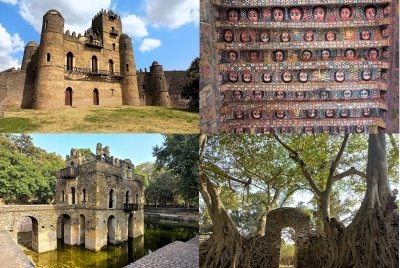
Gondar is the third permanent capital of the Ethiopian Empire (the first was Aksum, the second was Lalibela, after which there was a period in which the capitals changed very often). Finally, Emperor Fasilides, who reigned from 1632 to 1667, moved the capital to the high-lying Gondar and built the first palace there, still named after him today. Subsequent rulers had no less ambitions, each of them added their own palace next to it, of which there are four in the complex of Fasil Ghebbi. In addition, there is a library, a steam sauna and cages of Ethiopian lions, animals that were the symbol of emperors.
The complex clearly resembles the style of medieval European castles or Moghul architecture, although our guide swore that it was built only by Ethiopians. It looks great from the outside, but inside it is much worse - there is nothing left but bare walls, the walls are covered with bird droppings. Additionally, some of the roofs were destroyed by British bombing during World War II (Italian soldiers were stationed in the complex). Nevertheless, the complex looks magnificent, having no equivalent in sub-Saharan Africa. Fasil Ghebbi was included on the WH List along with some other buildings from this period. And those buildings are not to be missed.
Some of them are located outside Gondar and we had no time for them. But we visited the wonderful Gemja Ber Marjam (or Debre Birhan Selassje) church, with unique paintings on the walls and ceiling. …
Keep reading 0 comments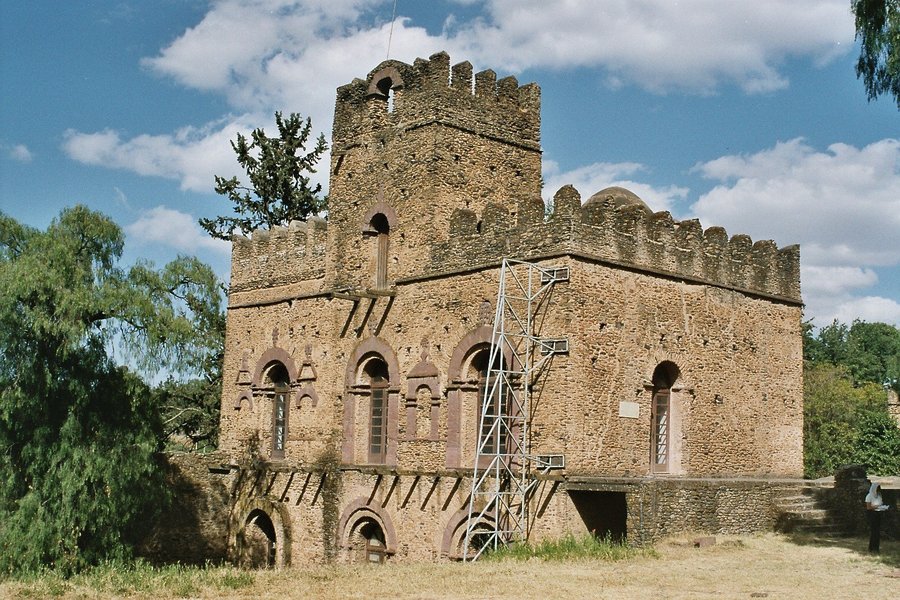
The road from the south from Bahir Dar goes along Lake Tana up to Gondar. Along the way is a heritage site that has ruins left from a 1500's castle with Portuguese influence where you would never expect to see it. Entering Gondar and seeing this magnificent and very much in tact site with many buildings was well worth the trip. And there are otehr things to do around this area including the famed Church with the angel faces.
Keep reading 0 comments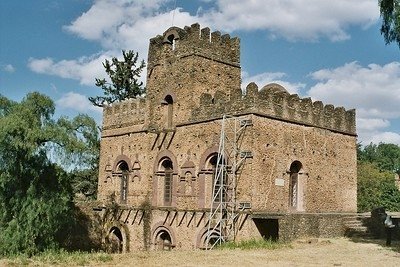
My first view of Gondar's heydays fell upon Fasiladas Baths. This pool lies in a rustic setting somewhat out of town. Sitting on the steps leading to the water, you can only imagine what it looks like during a major religious festival.
In the center of town, you find the Royal Enclosure. Here four castles and several other buildings from the 17th century remain. Still, the most prominent one is that of King Fasilades himself. Round-shaped towers characterize this European / Moghul-looking castle.
The whole historic area is amazing, and a pleasure to be in. Gondar's modern town is also a nice place to spend a few days.
Keep reading 0 comments
